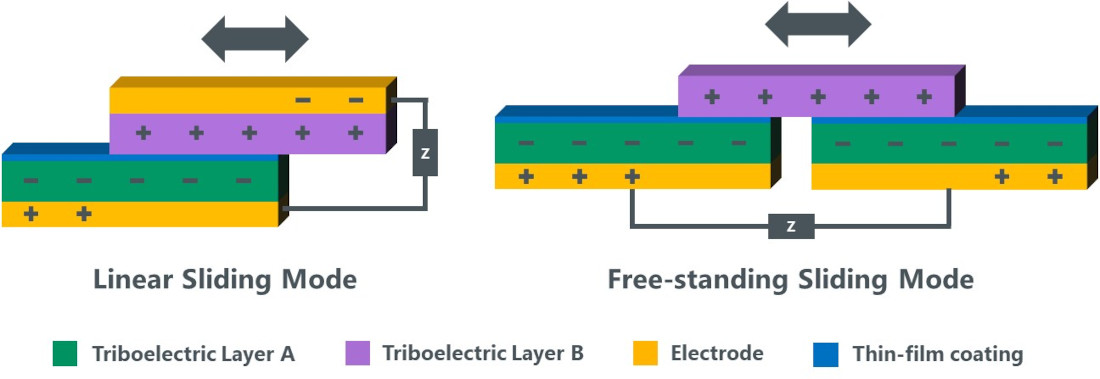TENG: Wear-resistant thin film-based triboelectric nanogenerators for self-powered sensing
Nowadays, sensors are an essential component of numerous machines in which they are used for control, performance optimization and condition monitoring. In everyday life and in the biomedical field, for example in wearables, clothing or implantable medical devices, they are used to monitor the user's behavior or physiological condition. Besides data acquisition, processing, and transmission, energy supply remains one of the biggest challenges. Triboelectric nanogenerators (TENGs), which are based on the triboelectric charging of solid materials through contact and subsequent separation, offer great potential for green energy generation in smart and IoT devices. They are characterized by low-cost production, easy integration, and operation in the low-frequency range. However, there is an urgent need to maximize electrical performance while ensuring long-term high performance.
The aim of this research project is to explore the potential of wear-resistant thin-film based TENGs and to utilize them for self-powered sensing of operating and environmental conditions. The performance of the TENGs is to be improved through surface modifications with thin films such as diamond-like carbon (DLC) or two-dimensional materials (e.g. MXene). It is assumed that the triboelectric properties of these films are influenced by environmental conditions (e.g. temperature, humidity). The objective is to use TENGs not only for power generation, but also for providing information about operating and environmental conditions.
In addition to power generation, TENGs will therefore be utilized to provide specific information about these conditions. For this purpose, the triboelectric signals are divided into time-resolved signals, which reflect current operating and environmental conditions, and long-term changes. The latter should provide both a baseline necessary for correctly interpreting short-term signals and insights into the wear state and remaining lifespan of the sensor.

Different operating modes of triboelectric nanogenerators.
Contact: Annika Hilgert

